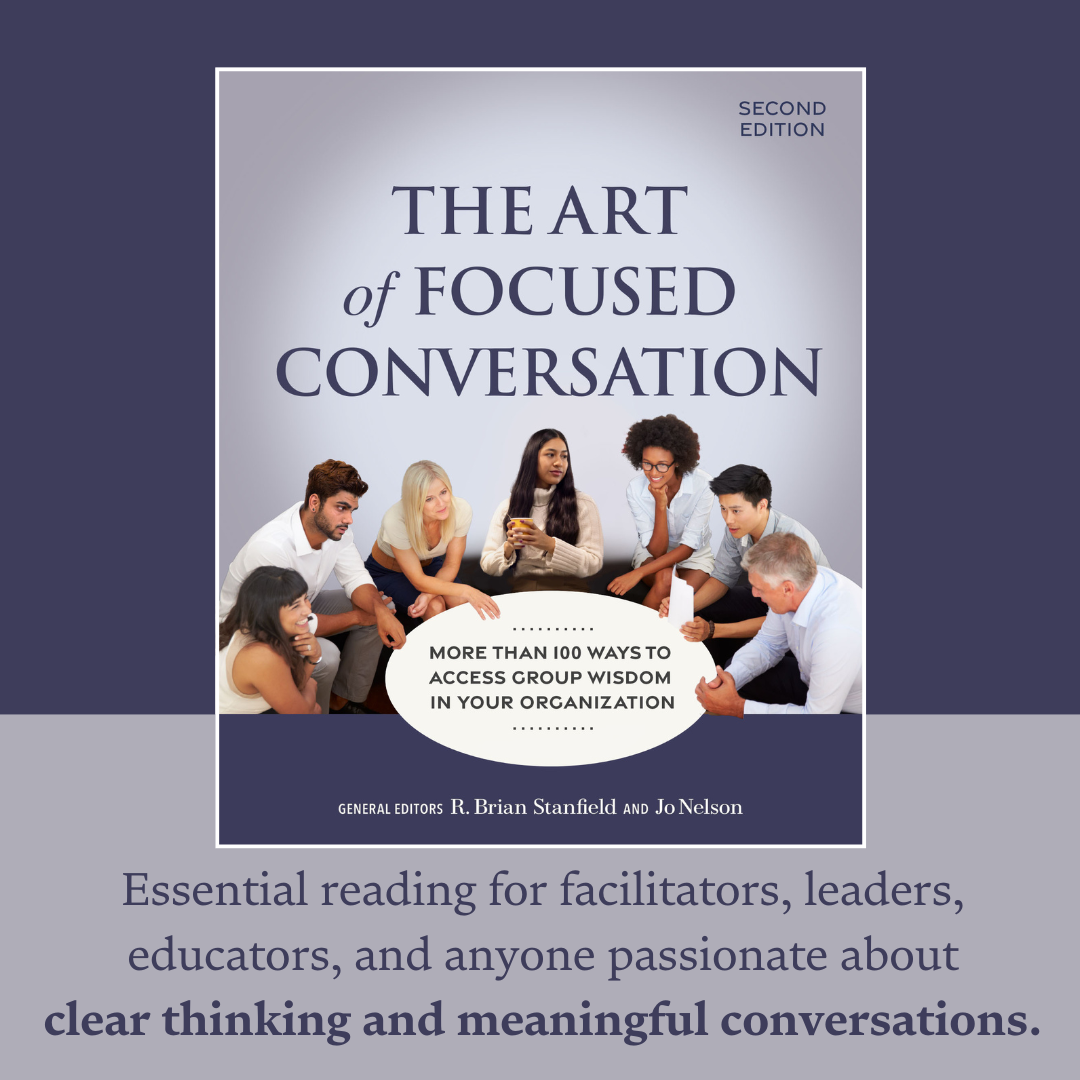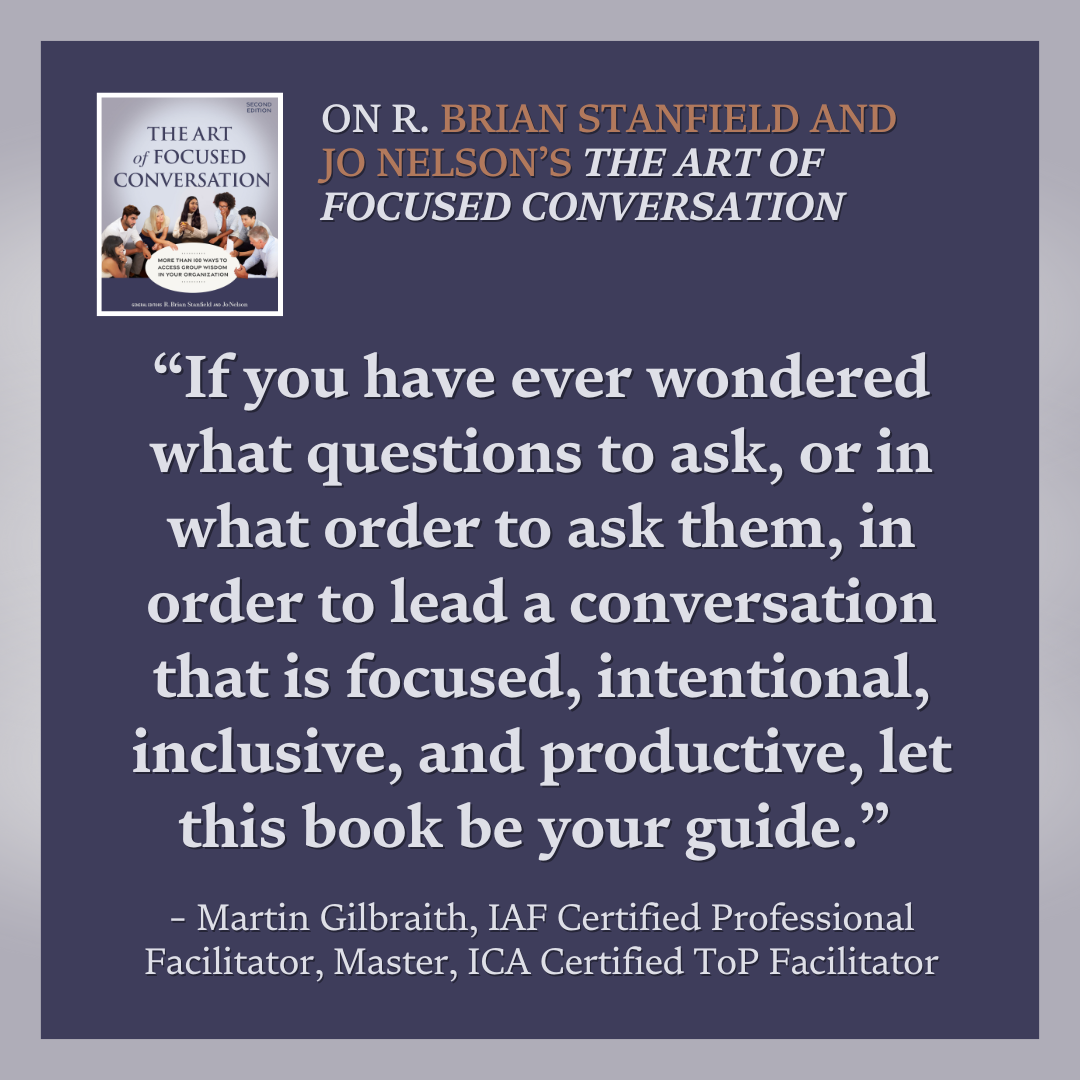
The essential, bestselling guide to designing and leading useful and effective group conversations, now completely revised and updated.
The Art of Focused Conversation is the quintessential theoretical and practical guide to group communication and participatory decision-making. Incorporating over 60 years of meticulous research and collaborative development, this perennial, international bestseller is an indispensable addition to any facilitator’s toolkit.
The Focused Conversation Method at the heart of The Art of Focused Conversation is a core component of the Technology of Participation (ToP) methodology developed by the Institute of Cultural Affairs. The original book is widely regarded as a key resource for designing and leading useful and effective conversations and fostering consensus and collaboration. This fully updated and revised edition includes:
- Preparation and guidelines for discussing challenging topics and facilitating a focused conversation
- A comprehensive overview of the ORID framework, made up of Objective, Reflective, Interpretive, and Decisional questions which guide a group to wise decisions
- In-depth analysis of how the underlying structure of ToP is based on applied phenomenology and is supported by the latest findings in neuroscience and social psychology
- New sections on diversity, equity, and inclusion; work-life balance; conflict resolution; and guiding focused conversations online
- 125 sample conversations that can be adapted to any situation.
Invigorate and elevate your group process with this invaluable resource—required reading for facilitators, leaders, educators, and anyone who wants to think clearly and guide thoughtful conversations.
_____________________________________________________________
Author Bios
Brian Stanfield was an educator, researcher, and Director of Publications at the Canadian Institute of Cultural Affairs. Editor of the first edition of The Art of Focused Conversation and The Workshop Book and author of The Courage to Lead, Brian made a lasting contribution to the use of participatory practices in facilitation. He died in 2006.
Jo Nelson worked with the Institute of Cultural Affairs for 50 years, leading participatory development projects and designing and teaching ToP facilitator training programs. She was a contributor to the first edition of The Art of Focused Conversation and is author of The Art of Focused Conversation for Schools and Getting to the Bottom of ToP.
_____________________________________________________________

This is a timely and helpful update to the book that is the gold standard in facilitation methods. I have used it in business for a quarter century. The update will allow it to be used far beyond professional facilitators. It should be especially useful to every CEO and anyone else who is trying to build a team to accomplish a task. Every CEO knows that successful con-
versations are the core requirement for successful organizations because such conversations engage the human element. This book provides the key to unlock that human element.
Questions are the primary tool of the facilitator. If you have ever wondered what questions to ask, or in what order to ask them, to lead a conversation that is focused, intentional, inclusive, and productive, let this book be your guide. I was once asked if there is such a thing as a universal principl of facilitation—mine is ORID, the powerful, foundational model of this ToP Focused Conversation method.
At the heart of The Art of Focused Conversation is the premise that our everyday “conversations” as teams, organizations, and communities are crucibles for transformation. Therefore, transforming the way we converse is an act of creating new value for the future. The powerful structure underlying The Art of Focused Conversation is an indispensable framework for consultants, coaches, and facilitators wanting to design and enable sustainable change. The more than 100 application scenarios contained in the book offer practical entry points.
The Art of Focused Conversation, 2nd Edition is an indispensable resource for facilitators and leaders, providing valuable insights and practical tools for fostering meaningful dialogue. This updated edition enhances the legacy of the original—an essential in my practice—by incorporating new research and examples, making it even more relevant and powerful.
It is a transformative guide for anyone dedicated to mastering impactful conversations.
I was introduced to the famous ORID method in the 90s, and I am confident that you will find this insightful 2nd edition timely, topical, and totally helpful for engaging others in thoughtful conversations where everyone has a voice, understanding is increased, and meaningful decisions are achieved. For all of us who are trying to deal with important workplace
and societal situations in culturally appropriate ways, the theory, practical framework, and real-life examples it contains will jump-start our ability to apply this method and create conversations that matter.
This book introduces or re-introduces you to a key lifeskill. Like all skills, the more you use it, the deeper your understanding grows, and the more you will use it naturally in more situations. This is one of the most important skills I have learned in my life, and this new edition refines the understanding of the method and makes it easier for the practitioner to use. The expansion of the sample conversations and the appendices are very practical—a great addition to any facilitator’s resource library.
This second edition of The Art of Focused Conversation not only brings the groundbreaking book up to date after over twenty years, but greatly expands the repertoire of usage and deepens the theoretical understanding of the methods, especially in relation to neuroscience, philosophy, and social psychology. Expanded by over one hundred pages, this edition offers state-of-the-art theoretical and practical knowledge on effective conversations. I was especially touched by how the editors honored the original writing of Brian Stanfield while making significant improvements and additions. I have used these effective methods in my UNDP
policy and program work in countries and cities around the world, in teaching grad students at NYU Wagner, and in my ICA consulting and training in organizational, community, and leadership development, and now I use them in my writing and activism. For me, the ORID method is nothing less than an authentic way of thinking, dialoging, and living.
The Focused Conversation Method isn’t just about setting up meetings; it’s about creating spaces where every voice matters. This method encourages you to be intentional and mindful. It’s a game-changer for building inclusive environments where diverse perspectives can thrive. By honoring your intuition, emotions, and imagination, you unlock the full potential of every individual, making your group interactions richer and more impactful. An excellent addition to your toolkit!


